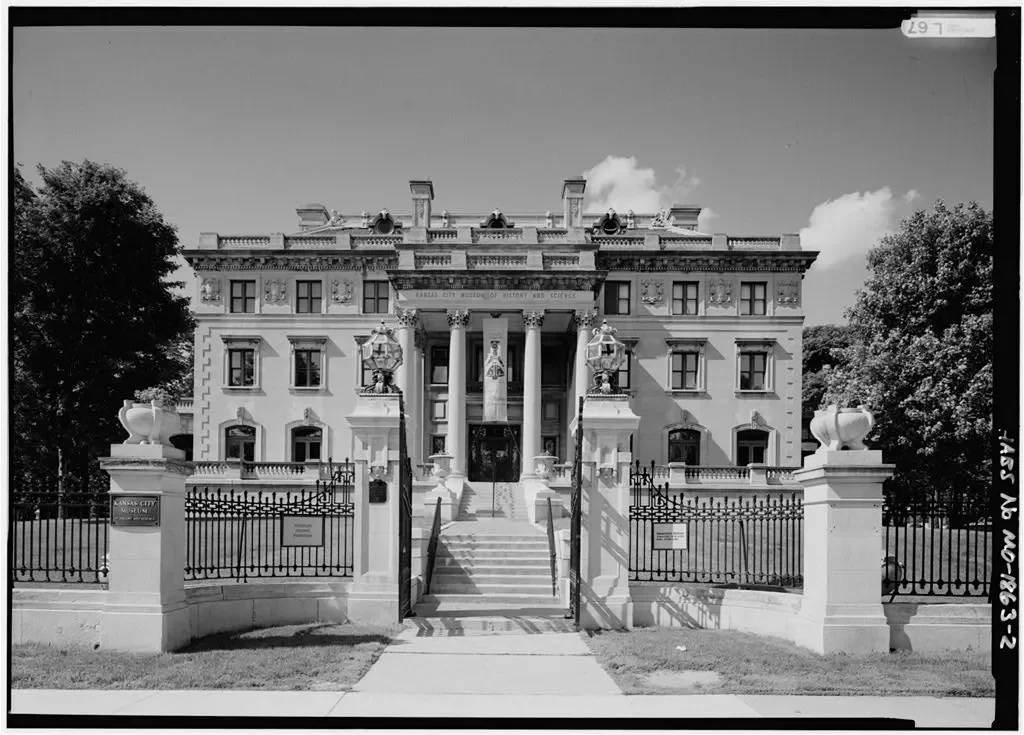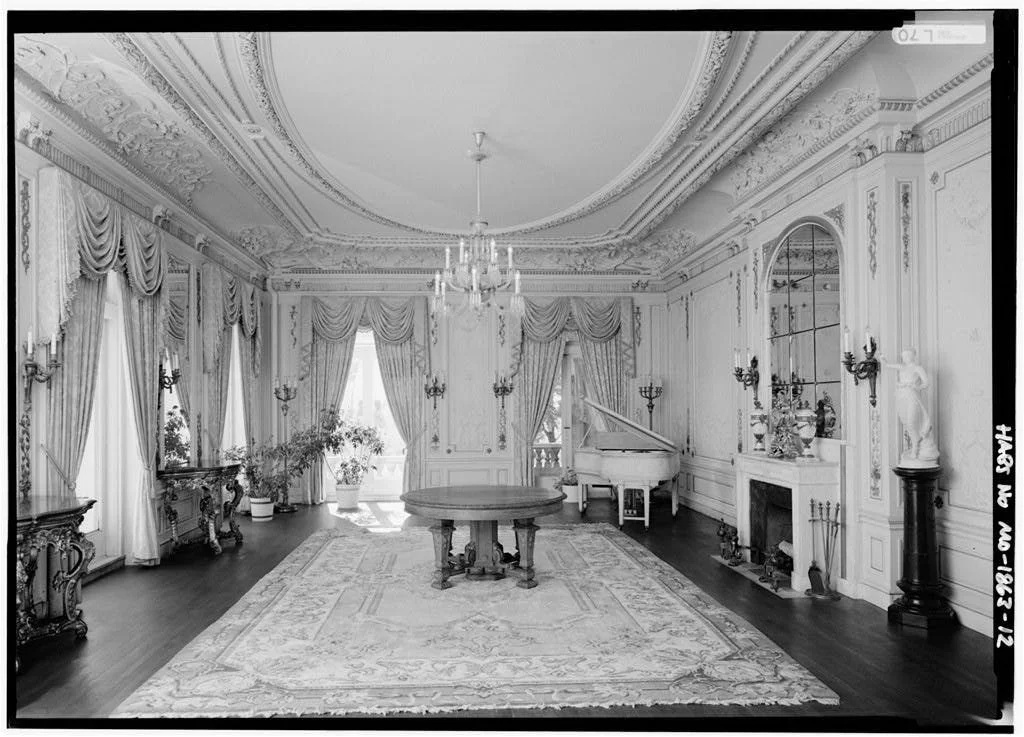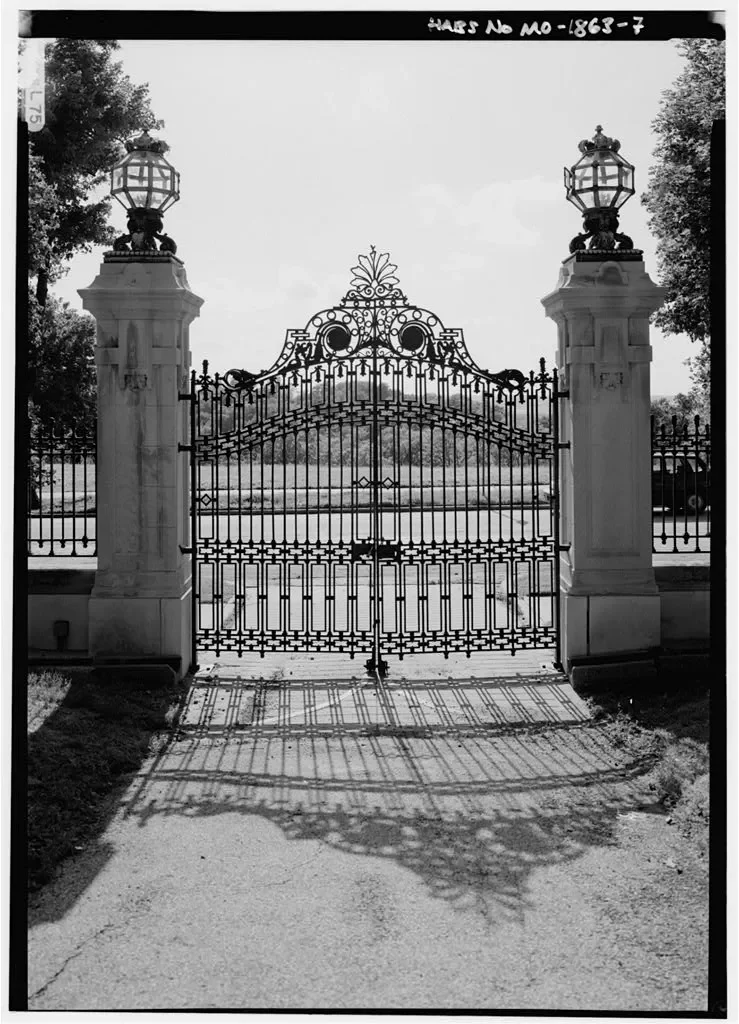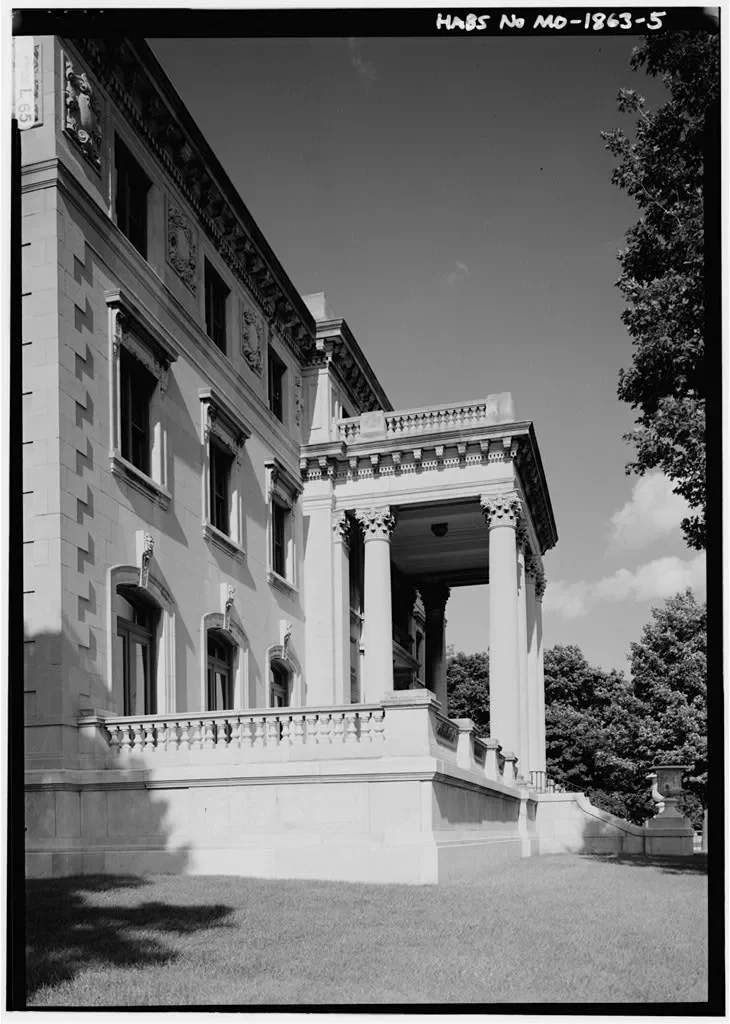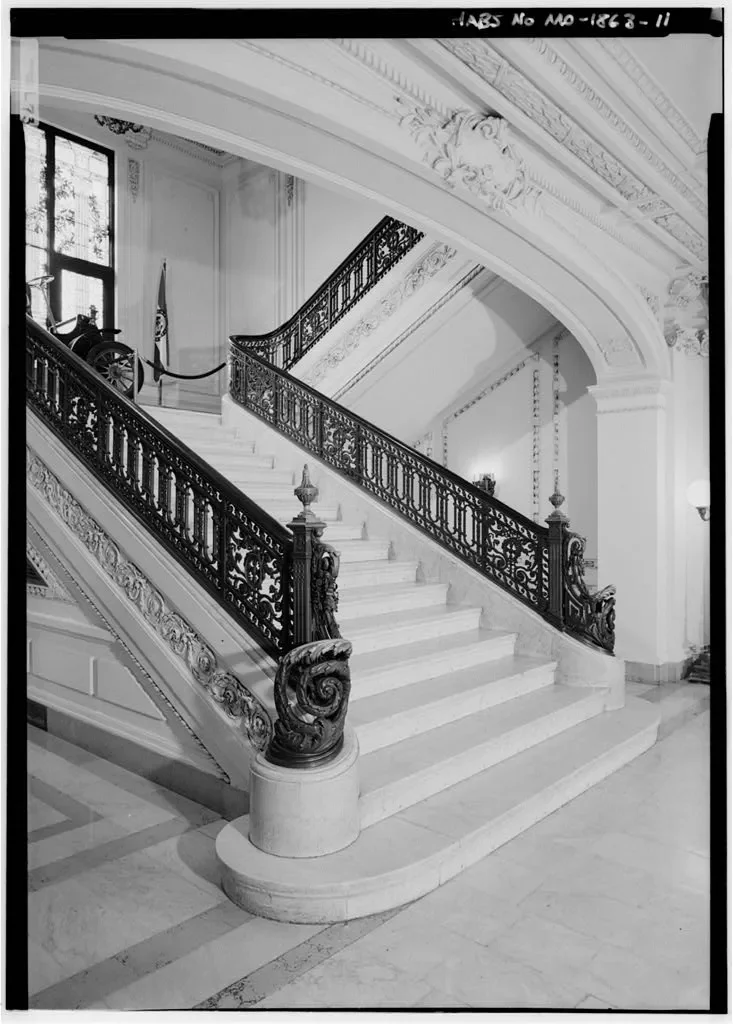The Story of Corinthian Hall
Perched high in the Scarritt Point neighborhood, Corinthian Hall is among Kansas City’s most architecturally and historically significant homes. Built in 1910 for lumber magnate Robert A. Long, the mansion was a statement of wealth, civic ambition, and refined taste. It was designed by architect Henry F. Hoit, who would go on to shape much of the city’s early skyline. The name “Corinthian Hall” comes from the six imposing Corinthian columns that define the front façade.
Robert A. Long founded the Long-Bell Lumber Company, which grew into one of the nation’s largest lumber producers. A major civic leader, Long helped finance the Liberty Memorial, co-founded the American Royal, and invested in urban planning efforts across the region. By the early 20th century, he began acquiring land for a private residence overlooking North Terrace Park (now Kessler Park). Construction took nearly three years and employed craftsmen from around the country. The completed estate, including its furnishings and outbuildings, cost close to $1 million—an extraordinary sum for the time.
Courtesy LOC/Historic American Buildings Survey.
The 35,000-square-foot mansion is a prime example of Beaux-Arts architecture, a style rooted in classical symmetry and ornamentation. It was built of Bedford limestone with a Carthage stone base and topped by a red tile roof. The front entrance features a grand portico with six 25-foot Corinthian columns. Decorative ironwork, imported chandeliers, and stained-glass windows add to the home’s craftsmanship and detail. A bronze porte-cochère crafted in New York allowed for covered carriage arrivals.
Courtesy LOC/Historic American Buildings Survey.
The interior includes over 70 rooms, each finished in a unique historical style. The first floor was designed for entertaining, with spaces such as the Great Hall—modeled after the Petit Trianon at Versailles—alongside a Louis XVI salon, Elizabethan-style library, and formal dining room with silk wall coverings and a Gobelin tapestry. The second floor included suites for Robert, his wife Ella, and their daughters Loula and Sallie. Staff lived on the third floor, and the home employed over 20 domestic workers. In the basement, amenities included a billiards room and bowling alley.
The estate originally included a carriage house, greenhouse, formal gardens, and a paddock for horses. Loula Long, one of Robert’s daughters, was a nationally recognized equestrian and moved her champion Hackneys to the family’s Longview Farm in Lee’s Summit in later years.
Courtesy LOC/Historic American Buildings Survey.
After Ella Long’s death in 1928, Robert remained in the house until his own passing in 1934. The family donated Corinthian Hall to the Kansas City Museum Association in 1939, and it opened to the public the following year. The museum became known for its eclectic mix of historical and scientific exhibits, including a planetarium and soda fountain. In 2008, the building closed for major restoration. Today, Corinthian Hall continues to serve as the Museum of Kansas City.
Interested in learning more about historic homes in KC? You’ll love The Historic Mansions of Kansas City, a self-guided tour of 26 of KC’s most iconic residences!
Courtesy LOC/Historic American Buildings Survey.
Courtesy LOC/Historic American Buildings Survey.
Courtesy LOC/Historic American Buildings Survey.
Courtesy LOC/Historic American Buildings Survey.

